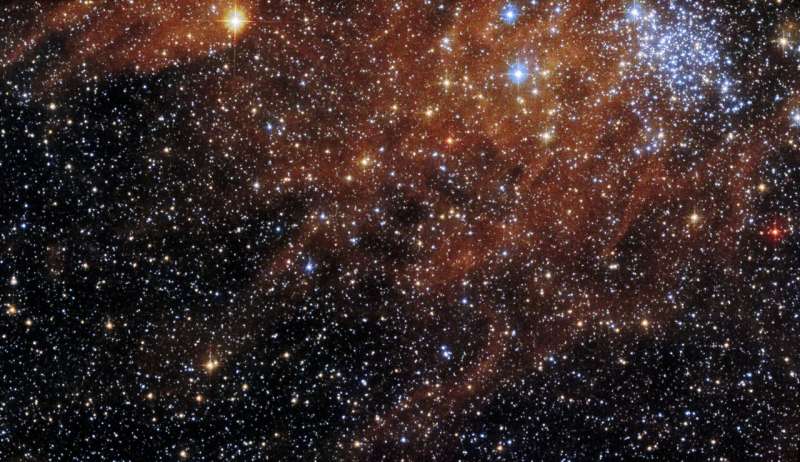Hubble spots bright splash of stars amid ripples of gas and dust

Open cluster KMHK 1231 is a group of stars loosely bound by gravity. Seen in the upper right of this Hubble Space Telescope image, this cluster in the Large Magellanic Cloud is surrounded by a crimson nebula of gas and dust extending across the image, where new stars may someday form. Orange and red in this image indicates visible and near-infrared light, respectively.
Open clusters are found in spiral and irregular galaxies, where star formation is common. They tend to form from the same cloud of gas and dust, so their stars share characteristics like age and chemical composition, providing excellent laboratories for studying how stars form and evolve. After a few million years, they may disperse into their galaxies.
Hubble observed this particular cluster as part of a program to examine how ultraviolet light is absorbed by the material that exists in space between Earth and the Large Magellanic Cloud. This information helps astronomers discover how much light objects in the satellite galaxy to the Milky Way truly emanate, critical to determining the characteristics of these objects.
Provided by NASA's Goddard Space Flight Center


















